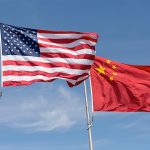continued from previous storyHome Away From Home
as ross Johns begins to talk about
the region, you can hear the excitement
build in his voice. The wide-open
spaces. The productive farms. The
hardworking and resourceful farmers.
When you get to know farmers, you
say, that kind of talk is hardly unexpected
when they re talking about
home. Well, there s a catch here. The
australian farmer isn t talking about his
Read Also

A new spin on farm legacy
What does farm legacy look like for the next generation.
the state of Victoria. he s talking about
the canadian Prairies.
Johns might drive a ute not a
pickup truck and he may call his combine
a header but he says every
time he s visited Western canada he s
felt right at home.
They are just incredibly similar,
he says. The space, the communities,
the families relative to each other
there are just so many similarities.
During the aBB/Viterra buyout
talks Johns had repeated occasions
to visit Western canada and he says
every time he did, he became more
convinced that the move was the right
one. It made good business sense
and, just as importantly, it made good
the canadians he sensed good business
partners for australian farmers.
Every time I ve been there I ve
enjoyed the place and the people,
Johns says. I really like coming to
Western canada.
lia, with a high of 37C forecast for later
that day. Meanwhile, Winnipeg was locked
in the freezer with temperatures showing
little if any ambition to break out of a brutal
chill that had hung on for weeks.
But as Johns spoke, the distance
shrank, the accents faded and the differences
disappeared, and the picture that
emerged was of two countries and industries
with such incredible similarities and
shared interests that it would be impossible
to ignore them.
Our legal systems, our ethics, our
grains industries, both countries share so
much and are so similar at times it can
be like looking in a mirror, Johns says.
They might be coming from opposite
ends of the globe, but there s lots of logic
in their coming together.
Shared strengths, challenges
There s no arguing that Australia and
Canada share plenty in common, right
back to our founding as countries. Both
are children of the British Crown and,
along with New Zealand, they form a trinity
of former UK colonies with shared history,
shared common law, and a certain
unspoken understanding of each other.
In many ways we re like three
brothers, Johns says. We sort of get
it in terms of the way we do business.
In the corporate world, this is known
as the kind of undefinable but extremely
important cultural issue that can make
or break the best-laid plans of merger
and joint venture. Canada and Australia
come by it naturally from our shared
heritage, Johns insists, and he goes on
to catalogue a list of more nuts-and-bolts
business and strategy criteria for
the grain industry in order to make an
even more compelling case.
Both Australia and Canada are based
on the same handful of grains, oilseeds and
pulse crops that they grow extremely well.
Both sectors are highly efficient, highly
mechanized and on large-acreage farms.
Both were even early adopters of the zero-tillage
production system, perfected here in
the 1980s and early 1990s.
We buy a lot of zero-till equipment
Once the crop is off the field, the similarities
don t end. If anything they re
magnified. Both sectors export the vast
majority of their crop. Australia ships
about 80 per cent of its crop overseas
most years, while about 70 per cent of
the Canadian crop heads to port.
Both nations are also widely known
as premium quality suppliers throughout
the global marketplace, something that
has meant long-standing alliances and
arrangements with international buyers.
They even share many key markets
throughout Asia, which is how Johns
participated in that first and fateful
informal meeting of the minds.
The two nations also share some of
the same farm challenges, as average
farm size increases, smaller communities
falter, and the rural population falls. The
remaining larger farms frequently find
cost-price squeeze.
In short, the two industries are in
many ways reflections of each other
from opposite sides of the globe.
But among those similarities and challenges
can be found opportunities, says
Johns. Not least of those are opportunities
for the grain buying and handling
companies. Both jurisdictions are home
to plenty of former farmer-owned grain
handling co-operatives and until recently
both had single sales desks through
the ABB and Australian Wheat Board
in Australia and the Canadian and the
Ontario wheat boards in Canada.
It s meant less rationalization through
mergers and buyouts than in other jurisdictions,
where a handful of global giants
rule. This means there remain Australian
and Canadian companies that can take
build a new foundation with a foot in
either country.
An idea in action
It was this conviction that led Johns
to be an early and vocal advocate of the
recent buyout of the ABB by the Regina,
Saskatchewan grain handler Viterra (formerly
the Saskatchewan Wheat Pool). He
says a few years ago it became obvious
to the ABB board that a strategic alliance
with another organization in another
country was the right path forward for
the company.
When the ABB management and
directors began looking around for possible
alliances, they quickly settled on two
likely areas the U. S. Pacific Northwest
and the Prairies of Canada. While the
U. S. probably could have worked, Johns
more sense to him, as did the fit between
Viterra and ABB.
It was a natural fit, putting ABB and
Viterra together, Johns says of the $1.6
billion buyout that saw Viterra purchase
ABB and its elevator and port assets.
That followed on the natural fit between
Australia and Canada. It was a very natural,
pragmatic step it s not anything
anyone should be surprised about.
It was also a necessary move, given
the relative size of the Canadian and
Australian companies in the global marketplace.
During a presentation this winter
in Saskatoon, Johns told Canadian
farmers gathered for a farm leadership
conference that on their own Viterra or
the ABB were small players, dwarfed by
the major multinationals. When combined
they re still a bit smaller, but they
now have additional market heft.
The company that is the result of this














